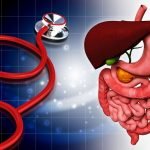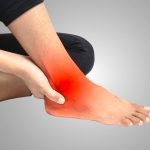Neuroinflammation & Lyme Disease
Bradley Bush, ND
Before 2013, the Centers for Disease Control and Prevention (CDC) estimated that 30 000 new Lyme disease (LD) diagnoses occurred annually.1 At that time, many people thought to be suffering from the debilitating effects of this potentially chronic disease were dismissed due to the rarity of the condition. In 2013 the CDC changed its estimation to roughly 300 000 people (approximately 1% of the US population) diagnosed with LD each year.1 According to CDC-posted statistics, the number of people diagnosed with LD is now 1.5 times greater than the number of women diagnosed with breast cancer,2 and 6 times greater than the number of people diagnosed with HIV/AIDS.3 This seismic shift in the LD perspective sheds light on the vast number of people walking around with persistent infections that may be the cause of declining health and the frustrating presence of symptoms without any obvious causative agent.
It is estimated that 34-62% of all LD patients presenting with persistent LD have a neurologic symptom.4 Cranial neuropathy, peripheral neuropathy, meningitis, and radiculitis are classic neurologic manifestations of LD. In the absence of a frank tick bite or an erythema migrans rash, doctors have been trained to use these classic neurologic symptoms to initiate diagnostic workups and treatment. What is missed is that persistent infections of LD more often present with psychiatric manifestations that are often not investigated with laboratory diagnostics.
Mood Disorder & Insomnia More Common than Neuropathy
A recent study evaluated the comparative health status of patients with CDC-positive LD that underwent conventional antibiotic therapies.5 It shed light on the long-term debilitating effects that LD has on the body. After 6 months, 23% of people with LD reported poor health; this increased over time to 56% at 1 year, and 72% at 5-10 years.5 The 10 symptoms that were reported as severe or very severe in chronic LD were: fatigue (48.3%), sleep impairment (40.8%), joint pain (39.1%), muscle aches (36.1%), other pain (34.4%), depression (33.8%), cognitive impairment (32.3%), neuropathy (31.6%), headaches (22.7%) and heart-related issues (9.6%). A 2009 study that concluded that chronic LD did not lead to increased psychiatric rates had some serious design flaws and reads like a biased attempt to discredit chronic LD.6
Doctors are so acutely aware of these classic symptoms of Lyme disease, that when they are absent, LD is frequently not investigated. The study discussed above indicated that there are more people suffering from depression and insomnia than neuropathy in chronic LD. Neuropsychiatric manifestations of LD occur in about 15% of individuals.7-9 Late/chronic Lyme neuroborreliosis is characterized by various neuropsychiatric manifestations, including mood disorders, psychosis, schizophrenia, visual and auditory hallucinations, paranoia, anorexia nervosa, and obsessive-compulsive disorder (OCD).10
The link between the immune system and psychiatric disorders has been observed through increased incidences of depression and bipolar disorder in medical conditions associated with chronic inflammation, such as obesity, diabetes, malignancies, rheumatoid arthritis, and multiple sclerosis.11 Among chronic hepatitis C patients who start combined treatment of interferon (a pro-inflammatory cytokine) and ribavirin (anti-viral), 25% will develop major depression.12 This sickness behavior has been well researched and traced back to the impact of cytokines on the central nervous system (CNS). This is a different mechanism than pediatric neuropsychiatric autoimmune disorders associated with streptococcal infections (PANDAS), or pure OCD associated with anti-basal ganglia/thalamic autoantibodies.13,14
The Brain is Not an Isolated Organ
It has been demonstrated the leukocytes use inflammatory cytokines, reactive oxygen species, and enzymes to facilitate their passage across the blood-brain barrier (BBB) and promote CNS inflammation.15 Other ways that cytokines act upon the CNS include direct passage across the BBB; passage across barrier-deficient structures within the brain (eg, area prostrema, pineal gland); secretion of cytokines by cells of the BBB, in response to peripheral immune stimuli; and afferent vagus nerve transmission.16
In my own medical practice, I regularly find the neuropsychiatric disorders of anxiety, depression, and OCD in LD patients without the presence of any classic neuropathy. These symptoms can also appear prior to any classic neuropathy, often signaling that dormant infections are becoming active. Insomnia is a common initial complaint, and frequently worsens when Borrelia burgdorferi activity increases. (See the case study published in the NDNR April 2011 article, “Hidden Causes of Insomnia.”17) It is common for LD patients to present with other signs of neuroinflammation, including tinnitus (may be drug-induced), constipation (possibly SIBO secondary to antibiotic treatments), memory loss, visual disturbances, constipation (rule out parasites), and headaches. These symptoms wax and wane according to the degree of neuroinflammation.
Pathophysiology of Neuroinflammation
Pathophysiology of neuroinflammation includes dysregulation of the glutamatergic system and synthesis of monoamine and catecholamine neurotransmitters. I spend a lot of effort clinically, measuring and manipulating these systems in LD patients.
Glutamate
Reducing elevated glutamate levels can provide significant clinical results while supporting multiple issues common in LD patients. Abnormal function of the glutamatergic system has been implicated in the pathophysiology of many different disorders, including amyotrophic lateral sclerosis (ALS), Huntington’s chorea, epilepsy, Alzheimer’s disease, schizophrenia, and anxiety disorders. Glutamate acts as a neurotransmitter but is also a neurotoxin.18 Glutamate levels increase with activation of T-cells and dendritic cells, the chief antigen-presenting cell in the body.19
Glutamate is easily monitored via the urine. Supplementation of N-acetyl-L-cysteine (NAC) at doses up to 3 g daily has been seen to be effective in addressing addictions (marijuana, nicotine, cocaine, gambling), OCD, bipolar disorder, schizophrenia, and trichotillomania.20 By concentrating cysteine in the extracellular fluids, it is forced to be transported across cell membranes to reestablish equilibrium; as a result, intracellular glutamate levels are reduced. NAC also supports LD patients as a precursor to the antioxidant glutathione (GSH), which inhibits expression of proinflammatory cytokines, and suppresses nuclear factor-kappa B (NF-kB).20-23 I discuss the use of NAC and other glutamate-modulating supplements in past NDNR articles, including “Natural Approaches to Anxiety”24 (March 2013) and “Neurotransmitter Immune Effects”25 (July 2013).
Inflammation Reduces Serotonin
Chronic inflammation will drive down serotonin levels, leading to worse stress adaptation, depression, anxiety, and disturbed sleep. Proinflammatory cytokines activate the enzyme indoleamine 2,3-dioxygenase (IDO), which breaks down tryptophan but favors its conversion into kynurenic acid over serotonin. Kynurenic acid is a precursor to quinolinic acid, which along with glutamate is a powerful agonist to N-methyl-D-aspartate (NMDA) receptors.26 NMDA receptor activation results in excitotoxicity through the production of free radicals and reduction in brain-derived nerve growth factor (BNDF).27 It has been shown that quinolinic acid in cerebral spinal fluid is significantly elevated in B burgdorferi infection, with the greatest levels in those with CNS inflammation.28 Because the body favors this quinolinic acid pathway over the serotonergic pathway, it is recommended to use 5-HTP (a serotonin precursor) rather than L-tryptophan supplementation with LD patients; this also applies to any other chronic inflammatory condition. Selective serotonin reuptake inhibitors (SSRIs) are commonly prescribed by Lyme-literate integrative doctors, but are often not necessary if storage levels of serotonin are rebuilt with 5-HTP therapy.
Oxidative Stress Lowers Catecholamines
Oxidative stress increases during an infection and in time may result in lower levels of catecholamines; I frequently see this in LD patients with fatigue and depression. Tetrahydrobiopterin (BH4) is an essential cofactor for a number of enzymes (tyrosine hydroxylase, tryptophan hydroxylase, and phenylalanine hydroxylase) required to synthesize a number of neurotransmitters, including the catecholamines and serotonin.29 BH4 is downregulated with oxidative stress; this is commonly seen in patients with chronic inflammation and immune activity.30 Supporting LD patients with catecholamine precursors (L-phenylalanine, L-tyrosine, and L-dopa) and supporting healthy adrenal glands (a major source of epinephrine and norepinephrine) are both important. Methylenetetrahydrofolate reductase (MTHFR) and catechol-O-methyltransferase (COMT) mutations (homozygous for the Val allele) can contribute to diminished monoamine and dopamine levels, respectively.
Case Study 1
Sleep is the First to Go
I am asked by a friend to make recommendations to his wife concerning a recent bout of severe insomnia. Her past medical history included LD the year before, which was treated unsuccessfully with a short course of antibiotics and then successfully treated with three 6-week courses of triple antibiotic therapy. Her recent lab work suggested a very active immune system (elevated hs-CRP; elevated urine dopamine, norepinephrine and glutamate).
I informed her that she likely had a reoccurrence of LD, which was confirmed by her Lyme-literate practitioner. Treatment was focused on the root cause of the insomnia: the Borrelia burgdorferi infection.
Case Study 2
Serotonin Issues
A 47-year-old female presents with extreme anxiety, low affect, loss of libido, dry mouth, sensation of skin crawling, and difficulty speaking. She is taking 20 mg escitalopram and 15 mg 5-MTHF.
Medical History
The patient tested CDC-positive for LD in 2008. Two 2-week courses of antibiotics (doxycycline) over 6 months resulted in arthralgias, myalgias, chronic fatigue, anxiety, insomnia, and cognitive dysfunction (poor short-term memory). She sought alternative health care and was treated with antibiotics for 2 years for chronic LD. She was then diagnosed and treated for 18 months for mold toxicity.
Lab Testing
Genetic testing showed increased dopamine catabolism (COMT Val/Val), diminished methylation and neurotransmitter synthesis (MTHFR C677T T/T), reduced neural synapse clearance of serotonin (5HT2C C/C), and reduced liver metabolism of escitalopram (CYP2C19 “intermediate metabolizer”).
Patient was CDC-negative for Lyme disease, negative for western blot (1 IgG band), but diagnosed with active borreliosis via a strong positive T-cell Lyme test at 400 SFUs (>25 SFUs = positive); hs-CRP was elevated at 3.2 mg/L; homocysteine was normal. Urine serotonin levels were extremely elevated at 1016.2 (range = 34.2-208.2); dopamine was normal, but the dopamine metabolite DOPAC was extremely elevated at 4401.5 (range = 150.5-1888.4); epinephrine and norepinephrine levels were very low.
Plan & Follow-up
Escitalopram dosage was immediately reduced in half to 10 mg, with plans to further reduce it due to fear that diminished liver metabolism could result in dangerously high circulating serotonin levels. The patient’s symptoms of escitalopram side effects included dry mouth, anxiety, insomnia, and low libido. Her 5HT2C mutation further increases her risk of serotonin syndrome due to reduced reuptake of serotonin back into the presynaptic neuron. Her 5-MTHF dosage was reduced from 15 mg to 1 mg due to clinical presentation of over-methylation (severe anxiety and inability to find words to speak). The patient reported 80% improvement in anxiety and insomnia in 7 days.
The initial dopamine support using an L-dopa (100 mg) and L-tyrosine (300 mg) product caused increased anxiety, so was replaced with a low-dose L-dopa (20 mg) and antioxidant support product that supported improved energy and adrenal health without stimulation.
Case Study 3
Glutamate-Driven Troubles
A 65-year-old female presents to the clinic with persistent LD, anxiety, depression, and severe insomnia (sleep averaging 2-3 hours nightly). She is currently taking tramadol, venlafaxine, clonazepam, and zolpidem, which have kept her stabilized during 4 years of antibiotic treatments. She wants to improve sleep and discontinue the venlafaxine, due to the side effect of low libido. She has a history of opposite effects with supplementation and most medications. She also experiences worse sleep if she supplements after 3 PM.
Lab Testing
Testing confirmed active borreliosis at 45 SFUs (>25 SFUs = positive). Serotonin was low; dopamine was elevated; norepinephrine was high; epinephrine was low; glutamate was highly elevated; and homocysteine was elevated at 4.5 mg/L.
Plan
Taurine, L-theanine, and 5-HTP at bedtime were not tolerated, so dosed in the morning. A product containing about 800 mg NAC along with L-theanine, CoQ10, and ALA was given TID to reduce glutamate activity and support oxidative stress. A supplement of 4-amino-3-phenylbutyric acid was tolerated in the morning but not at bedtime. A custom tincture of Scutellaria (skullcap), Avena (oat), and Andrographis was given early evening and at bedtime to reduce innate immune activation and production of inflammatory cytokines. A combination anti-inflammatory botanical was given BID to address neuroinflammation. Lastly, lithium orotate 5 mg was provided TID.
Botanical treatment for the common Bartonella co-infection was started, due to other presenting symptoms and poor response to previous antibiotic treatments.
Follow-up
Patient has been slow to titrate up on botanicals, due to numerous skin lesion outbreaks. Mood, energy, and insomnia have gradually improved. Anxiety is substantially better. Currently she averages 3 hours per night, but has episodes of 5-6 hours per night, which she has not experienced in over 28 years.
Summary
The absence of gross neuralgias or neuropathy is commonplace in chronic or persistent LD, and doctors should be alert that psychiatric disorders may be the most prominent presenting symptoms. Common psychiatric disorders resulting from chronic immune activation and inflammation are often attributed to other causes (stress, genetics, trauma, etc); however, tick-borne illnesses like Lyme disease should be thoroughly ruled out. As a result of chronic illness, patients often resort to psychiatric medications, but these do not address the root causes underlying changes in brain biochemistry. Restoring neurotransmitters through precursor supplementation, reducing neuroexcitatory effects of a chronically active immune system, and calming the immune system are ways to support LD patients’ foundational health.
 Bradley Bush, ND, received his naturopathic doctor degree from NCNM, and is currently co-owner and clinic director of Natural Medicine of Stillwater. Dr Bush’s practice focus is fatigue, insomnia, mood disorders, and Lyme disease. Dr Bush has over 15 years of nutritional and medical laboratory industry business experience. He is also owner of Natural Health Insights, LLC, providing consultant services to the natural products and laboratory testing industry. Dr Bush speaks nationally and regularly publishes on the topics of psychoneuroimmunology, brain-gut connections and Lyme disease. He sits on 2 non-profit boards; Naturopathic Education and Research Consortium and Compass Center for Health. He lives in Stillwater, MN, with his naturopathic wife and 4 daughters.
Bradley Bush, ND, received his naturopathic doctor degree from NCNM, and is currently co-owner and clinic director of Natural Medicine of Stillwater. Dr Bush’s practice focus is fatigue, insomnia, mood disorders, and Lyme disease. Dr Bush has over 15 years of nutritional and medical laboratory industry business experience. He is also owner of Natural Health Insights, LLC, providing consultant services to the natural products and laboratory testing industry. Dr Bush speaks nationally and regularly publishes on the topics of psychoneuroimmunology, brain-gut connections and Lyme disease. He sits on 2 non-profit boards; Naturopathic Education and Research Consortium and Compass Center for Health. He lives in Stillwater, MN, with his naturopathic wife and 4 daughters.
Interview with Wayne Anderson, ND
- What sort of correlations do you see between tick-borne illnesses and manifestations of neurological symptoms?
Lyme and the co-infections are functional intracellular pathogens that affect the self-regulating systems of the body: the gastrointestinal system, the immune system, the endocrine system and – most importantly – the neurological system. We as practitioners must have a high index of suspicion for the possibility of tick-borne infections in patients presenting with a prevalence of chronic, difficult-to-treat neurological symptoms.
Though the pathogens from tick-borne infection have been found in all the tissue of the body, they have an affinity for the nervous system. By their nature, Borrelia and the co-infections (Babesia, Bartonella, Ehrlichia, and the other Rickettsia species) are lipophilic; they are attracted to our fat. The fat that surrounds our nerves (as the myelin sheath and the 50% of our brain that is fat) becomes vulnerable to these invaders. Inflammation is the result as these slow-growing intracellular pathogens build in the fat surrounding our nerves and in our brain. This inflammation results in a symptomatic presentation that can be specific to the dominant invader. Each of the co-infections has a slightly different neurologic presentation.
When confronted with a patient with chronic multi-system, multiple-symptom complaints, including a constellation of neurological symptoms, Lyme and the co-infections must be considered.
- What approaches do you find useful with patients suffering from neuralgias?
When a patient’s nerve pain is chronic and resists our best efforts of treatment, and when other systemic symptoms are also present, such as fatigue, migrating joint pain, irregular heart rate, and insomnia, to name a few, Lyme and the co-infections must be in the differential diagnosis. After taking a thorough history, physical exam, and laboratory testing, we can make a presumptive diagnosis that some pathogen in this family could be driving this patient’s symptomatic presentation. Knowing the general symptoms of Borrelia, Babesia, Bartonella, Ehrlichia and the other Rickettsia species, and appreciating how this patient’s immune system is most challenged, leads us to know which of these pathogens to treat.
It is a very satisfying experience when, as a practitioner, you appreciate the dominant co-infection and administer an effective treatment, and an entire constellation of symptoms responds in a predictable way.
- What approaches do you find useful when addressing myalgias?
As naturopathic doctors, we live by the precept that each patient must be treated as an individual. The treatment of chronic Lyme disease demands that we to live up this ideal. It is very difficult to generalize about the symptoms of this family of pathogens, as each patient with this diagnosis could present very differently. We must remain very open to this variability of symptoms and how they play out in the strengths and weakness of the individual before us.
And we do need to generalize to communicate general concepts that play themselves out in this complex array of symptomatic possibilities. In our generalizing about symptoms, the co-infections do not often cause muscle pain. Borrelia is more likely to cause some muscle pain, but this is more often a secondary response to a compromised detoxification system. So, very generally speaking, in a patient with a chronic intracellular infection in this family, muscle pain is a secondary effect of the pathogen compromising the function of some aspect of the patient’s detoxification system. Implementing treatment to correct the individual patient’s detoxification problem, whether it might be gastroparesis in the gut, slow phase 1 and 2 liver pathways, compromised methylation, or a stagnant lymphatic system, to name a few, must be remedied before significant improvement can be made in treating the chronic infections. Very generally speaking, treat the stuck detox issue and the myalgia will improve.
References:
- Centers for Disease Control and Prevention. Press Release: CDC provides estimate of Americans diagnosed with Lyme disease each year. CDC Web site. http://www.cdc.gov/media/releases/2013/p0819-lyme-disease.html. Accessed March 19, 2014.
- Centers for Disease Control and Prevention. Breast Cancer Statistics. CDC Web site. http://www.cdc.gov/cancer/breast/statistics/. Accessed March 19, 2014.
- Centers for Disease Control and Prevention. HIV/AIDS Statistics Overview. CDC Web site. http://www.cdc.gov/hiv/statistics/basics/. Accessed March 19, 2014.
- Cameron D, Gaito A, Harris N, et al. Evidence-based guidelines for the management of Lyme disease. Expert Rev Anti Infect Ther. 2004;2(1 suppl):S1-S13.
- Johnson L, Wilcox S, Mankoff J, Stricker RB. Severity of chronic Lyme disease compared to other chronic conditions: a quality of life survey. PeerJ. 2014;2:e322.
- Hassett AL, Radvanski DC, Buyske S, et al. Psychiatric comorbidity and other psychological factors in patients with “chronic Lyme disease”. Am J Med. 2009;122(9):843-850.
- Garcia-Monco JC, Benach JL. Lyme neuroborreliosis. Ann Neurol. 1995;37(6):691-
- Steere AC. Lyme disease. N Engl J Med. 1989;321(9):586-5
- Miklossy J, Kuntzer T, Bogousslavsky J, et al. Meningovascular form of neuroborreliosis: similarities between neuropathological findings in a case of Lyme disease and those occurring in tertiary neurosyphilis. Acta Neuropathol. 1990;80(5):568-572.
- Miklossy J. Chronic or late Lyme neuroborreliosis: analysis of evidence compared to chronic or late neurosyphilis. Open Neurol J. 2012;6:146-157.
- Najjar S, Pearlman DM, Alper K, et al. Neuroinflammation and psychiatric illness. J Neuroinflammation. 2013;10:43.
- Udina M, Castellví P, Moreno-España J, et al. Interferon-induced depression in chronic hepatitis C: a systematic review and meta-analysis. J Clin Psychiatry. 2012;73(8):1128-1138.
- Dale RC, Heyman I, Giovannoni G, Church AW. Incidence of anti-brain antibodies in children with obsessive-compulsive disorder. Br J Psychiatry. 2005;187:314-319.
- Bhattacharyya S, Khanna S, Chakrabarty K, et al. Anti-brain autoantibodies and altered excitatory neurotransmitters in obsessive-compulsive disorder. Neuropsychopharmacolog 2009;34(12):2489-2496.
- Larochelle C, Alvarez JI, Prat A. How do immune cells overcome the blood-brain barrier in multiple sclerosis? FEBS Lett. 2011;585(23):3770-3780.
- Schwarz MJ. Cytokines, neurophysiology, neuropsychology, and psychiatric symptoms. Dialogues Clin Neurosci. 2003;5(2):139-153.
- Bush B. Hidden Causes of Insomnia. NDNR. 2011;7(4):1.
- Hansen AM, Caspi RR. Glutamate joins the ranks of immunomodulators. Nat Med. 2010;16(8):856-858.
- Franco R, Pacheco R, Lluis C, et al. The emergence of neurotransmitters as immune modulators. Trends Immunol. 2007;28(9):400-407.
- Dean O, Giorlando F, Berk M. N-acetylcysteine in psychiatry: current therapeutic evidence and potential mechanisms of action. J Psychiatry Neurosci. 2011;36(2):78-86.
- Kim H, Seo JY, Roh KH, et al. Suppression of NF-kappaB activation and cytokine production by N-acetyl cysteine in pancreatic acinar cells. Free Radic Biol Med. 2000;29(7):674-683.
- Jiang XF, Zeng WY, Pu J, Liu YM. Effect of N-acetyl cysteine on lipopolysaccharide stimulating IL-8 expression of human uterine smooth cell. Sichuan Da Xue Xue Bao Yi Xue Ban. 2008;39(2):235-238.
- Geiler J, Michaelis M, Naczk P, et al. N-acetyl-L-cysteine (NAC) inhibits virus replication and expression of pro-inflammatory molecules in A549 cells infected with highly pathogenic H5N1 influenza A virus. Biochem Pharmacol. 2010;79(3):413-420.
- Bush B. Natural Approaches to Anxiety. NDNR. 2013;9(3):1.
- Bush B. Neurotransmitter Immune Effects. NDNR. 2013;9(7):10-11.
- Oxenkrug GF. Tryptophan kynurenine metabolism as a common mediator of genetic and environmental impacts in major depressive disorder: the serotonin hypothesis revisited 40 years later. Isr J Psychiatry Relat Sci. 2010;47(1):56-63.
- Miller AH, Maletic V, Raison CL. Inflammation and its discontents: the role of cytokines in the pathophysiology of major depression. Biol Psychiatry. 2009;65(9):732-741.
- Halperin JJ, Heyes MP. Neuroactive kynurenines in Lyme borreliosis. Neurology. 1992;42(1):43-50.
- Li W, Knowlton D, Woodward WR, Habecker BA. Regulation of noradrenergic function by inflammatory cytokines and depolarization. J Neurochem. 2003;86(3):774-783.
- Schmidt TS, Alp NJ. Mechanisms for the role of tetrahydrobiopterin in endothelial function and vascular disease. Clin Sci (Lond). 2007;113(2):47-63.










